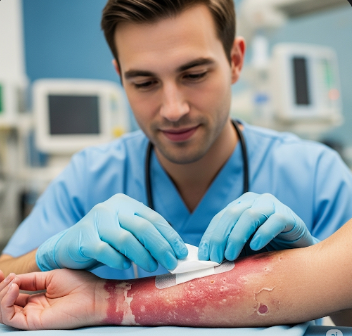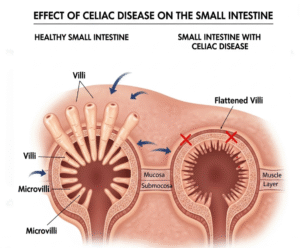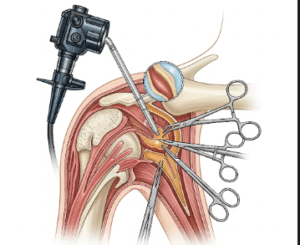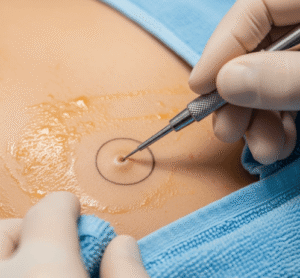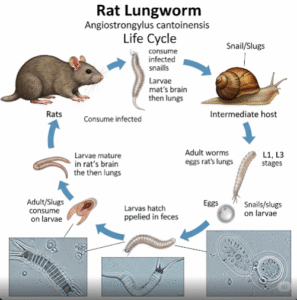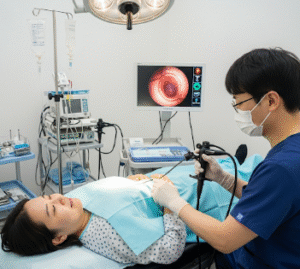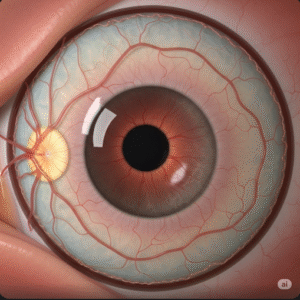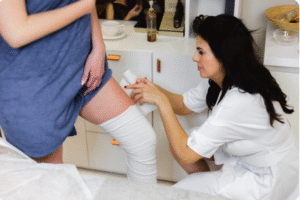Overview
Burns are injuries to the skin and underlying tissues caused by heat, chemicals, electricity, radiation, or friction. They can range from minor first-degree burns affecting only the outer layer of the skin to life-threatening third-degree or fourth-degree burns that damage deeper tissues, muscles, or even bones.
In Korea, burn treatment is highly advanced, with specialized burn centers, intensive care units, and reconstructive surgery services. Korean hospitals emphasize rapid assessment, wound management, infection prevention, and rehabilitation to optimize recovery and minimize complications.
What are Burns?
Burns occur when the skin or underlying tissues are damaged by thermal, chemical, electrical, or radiation exposure. They are classified based on severity and depth:
- First-degree burns: Affect only the outer layer of skin (epidermis), causing redness and pain
- Second-degree burns: Affect the epidermis and part of the dermis, causing blisters, swelling, and severe pain
- Third-degree burns: Extend through the dermis and may affect underlying fat, causing white, charred, or leathery skin with numbness
- Fourth-degree burns: Extend to muscles, tendons, or bones and are often life-threatening
Burns can also be classified by cause: thermal (flame, hot liquids), chemical (acids, alkalis), electrical, or radiation (sunburn, radiation therapy).
Symptoms
Burn symptoms vary depending on burn depth, size, and cause:
- Redness and inflammation in first-degree burns
- Blisters and swelling in second-degree burns
- White, brown, or blackened skin in third- and fourth-degree burns
- Severe pain, except in deeper burns where nerves are destroyed
- Peeling or sloughing of skin during healing
- Shock symptoms, including rapid pulse, low blood pressure, and confusion in extensive burns
- Fever or signs of infection in cases of burn wound contamination
Causes
Burns result from various external factors:
- Thermal burns: contact with flames, hot liquids, steam, or hot objects
- Chemical burns: exposure to acids, alkalis, or toxic chemicals
- Electrical burns: contact with live electrical currents
- Radiation burns: overexposure to sunlight or radiation therapy
- Friction burns: skin abrasion from rubbing against rough surfaces
Risk Factors
- Young children and elderly due to thinner skin and slower healing
- Occupational hazards, such as firefighters, electricians, or chemical workers
- Domestic accidents, including hot liquids, kitchen fires, or heating appliances
- Sun exposure without protection
- Underlying health conditions, such as diabetes, which may impair healing
- Alcohol or drug use, increasing the risk of accidents
Complications
Burns can lead to serious short- and long-term complications:
- Infection, including cellulitis, sepsis, or wound contamination
- Fluid loss and shock in extensive burns
- Scarring and contractures, which may limit mobility
- Hypothermia due to loss of skin barrier
- Organ failure in severe burns
- Psychological trauma, including anxiety, depression, or post-traumatic stress disorder
- Delayed healing in patients with comorbidities
Prevention
Burn prevention involves safety measures at home, work, and outdoors:
- Use of protective clothing and gear when handling heat, chemicals, or electricity
- Supervision of children in kitchens, bathrooms, and around heating devices
- Safe storage of chemicals and flammable materials
- Fire safety measures, including smoke alarms and fire extinguishers
- Sun protection, including sunscreen, hats, and protective clothing
- Education on first aid for minor burns to reduce complications
Treatment Options in Korea
Diagnosis
Burn diagnosis involves clinical assessment, imaging, and laboratory studies:
- Physical examination to assess burn depth, size, and affected body area
- Rule of Nines or Lund-Browder chart to estimate total body surface area affected
- Blood tests to monitor hydration, electrolytes, and organ function
- Imaging in cases of electrical burns or suspected deeper tissue involvement
Medical Management
Treatment depends on burn severity:
- First-degree burns: cooled with water, topical ointments, and pain relief
- Second-degree burns: wound cleaning, dressing changes, antibiotics if infection risk, and pain management
- Third- and fourth-degree burns: hospitalization, intravenous fluids, antibiotics, and often surgical intervention
- Debridement to remove dead tissue
- Topical antimicrobials to prevent infection
- Pain management using NSAIDs, opioids, or sedatives in severe burns
Surgical Interventions
Severe burns often require advanced surgical procedures:
- Skin grafting, using autografts or synthetic skin substitutes
- Flap surgery for deep tissue coverage
- Reconstructive and cosmetic surgery to restore appearance and function
- Amputation in extreme cases of irreparable tissue damage
Rehabilitation and Supportive Care
- Physical therapy to maintain mobility and prevent contractures
- Occupational therapy to regain daily function
- Psychological support for trauma and anxiety
- Nutritional support to promote healing
- Long-term scar management, including pressure garments, silicone sheets, and laser therapy
Prognosis
The prognosis of burns depends on severity, location, patient age, and timely treatment:
- Minor burns generally heal fully with minimal intervention
- Moderate burns may leave scars but have good recovery with proper care
- Severe burns require intensive management and may have long-term complications, but Korean burn centers provide high survival rates and advanced rehabilitation
- Early intervention, infection prevention, and reconstructive surgery significantly improve outcomes
Burn management in Korea combines state-of-the-art medical, surgical, and supportive care, ensuring patients achieve optimal healing, functional recovery, and minimal long-term complications.

